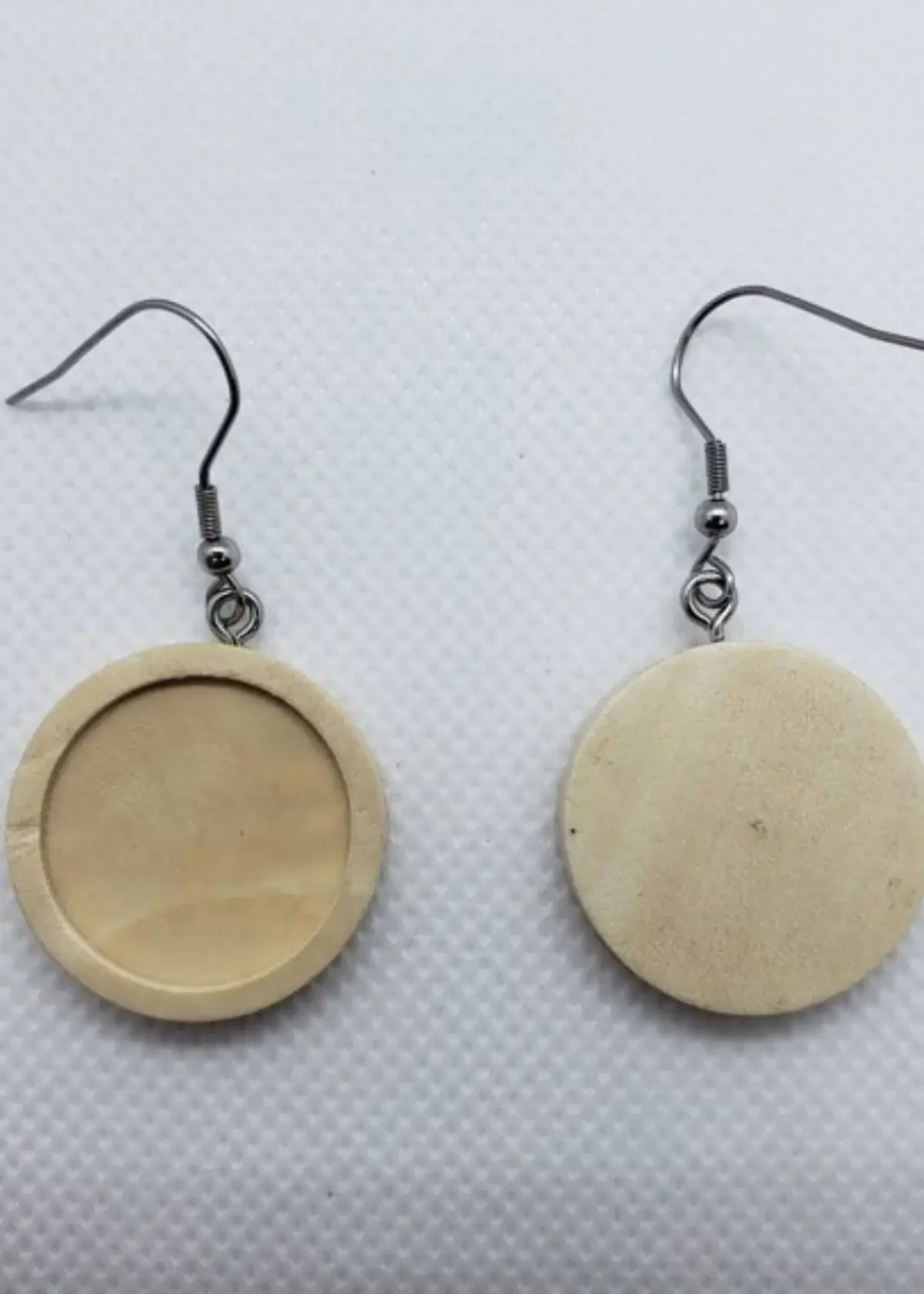Regarding jewelry design, earrings are some of the most versatile pieces you can create. The possibilities are endless, whether you’re making a statement pair or subtle everyday studs. But have you ever considered using wood for your earring blanks? Not only is it eco-friendly, but it also adds a rustic and unique touch to your designs. In this ultimate guide, we’ll explore what types of wood are commonly used for earring blanks, from classic birch to exotic burl wood.
1. Birch
Birch is one of the most popular types of wood used for earring blanks. It’s a lightweight wood that’s easy to work with, making it ideal for laser cutting and shaping into various earring shapes. Birch also has a beautiful pale color that can be left natural or dyed to match a specific color palette.
2. Walnut
Looking for something a bit darker and more dramatic? Walnut wood is famous for its rich, chocolate-brown color and unique grain patterns. It’s also a hard and durable wood that won’t easily crack or warp over time, making it perfect for statement earrings that will get a lot of wear and tear.
3. Maple
Maple wood is known for its light, creamy color, often seen in kitchen cabinets and furniture. It’s an ideal wood for dainty and delicate earring designs, as it’s easy to cut and sand down to a polished finish. Plus, the light color is a blank canvas, allowing you to add personal design touches.
4. Cherry
For a warm and earthy touch, cherry wood is a great option. Its reddish-brown color can range from light to dark, and it has a beautiful wood grain that adds depth to any earring design. Cherry wood is also known for being sturdy, so it’s an excellent choice for larger or more intricate earring styles.
5. Burlwood
If you want to make a true statement with your earrings, consider using Burlwood for your blanks. Burlwood is a highly sought-after wood that’s known for its unique and unpredictable grain patterns. It’s often used in high-end furniture and home decor and can add a touch of luxury to your earring designs.
Wood makes for a beautiful and unique material choice for earring blanks. From classic birch to exotic burlwood, there’s a type of wood to suit any style or design. Not only is wood a sustainable option for jewelry making, but it also adds a natural and earthy touch to your accessories. So, the next time you’re designing a new pair of earrings, consider using wood for your blanks and watch your designs come to life.
Are you tired of the same old boring earrings? Say goodbye to plain metal and plastic studs and hello to the unique and natural beauty of wood earring blanks. We've researched so you don't have to and found the best selections for you. Whether you prefer the sleek and elegant look of dark hardwood or the rustic charm of lighter, unfinished wood, our wood earring blanks will become your next favorite accessory. Follow the link and explore our inventory today to find the perfect pair for your style. Trust us; you won't regret it.
What are the different shapes available for wood earring blanks?
Wood earring blanks come in various shapes to suit different design preferences. You can find circular, oval, square, rectangular, teardrop, and even more unique shapes like hexagons or hearts. Each shape offers aesthetic appeal, allowing you to create customized earrings that reflect your style. Whether you prefer classic and symmetrical designs or more unconventional and artistic shapes, plenty of options are available to inspire your creativity.

What techniques can I use to add decorative elements to wood earring blanks?
Adding decorative elements to wood earring blanks can elevate their visual appeal. Various techniques can be employed, such as wood burning, carving, painting, or inlaying. Wood burning involves using a heated tool to create intricate patterns or designs on the surface. Carving allows you to sculpt shapes or motifs directly onto the wood. Painting allows applying colors, patterns, or even intricate artwork. Inlaying involves embedding contrasting materials like metal or gemstones into the wood. These techniques enable you to unleash your artistic flair and transform simple wood blanks into unique, eye-catching earrings.

What is the average weight of wood earring blanks?
The average weight of wood earring blanks can vary depending on several factors, including the type of wood used and the specific design of the blanks. However, wood earring blanks are lightweight to ensure comfortable wear. On average, they typically range from a few grams to around 10 grams per pair. This lightweight nature makes them suitable for extended periods of wear without causing discomfort or strain on the ears. It's essential to consider the weight of the finished earrings when adding other decorative elements or findings to maintain a balanced and comfortable design.

How can I protect wood earring blanks from moisture damage?
Protecting wood earring blanks from moisture damage is essential to maintain quality and longevity. Store the blanks in a dry and well-ventilated area, away from excessive humidity or direct sunlight, to safeguard them. If your area is prone to high humidity levels, consider using moisture-absorbing products like silica gel packs in your storage containers. Applying a protective sealant, such as polyurethane or lacquer, to the surface of the blanks creates a barrier against moisture penetration. Besides, removing earrings before activities involving water exposure, like swimming or showering, can help prevent damage.

How do I apply a protective sealant to wood earring blanks?
Applying a protective sealant to wood earring blanks helps preserve their appearance and durability. First, ensure the blanks are clean and free from dust or debris. Using fine-grit sandpaper, lightly sand the surface to create a smooth finish. Then, choose a suitable sealant like polyurethane or lacquer and follow the manufacturer's instructions for application. Using a brush or cloth, apply a thin, even sealant layer to all sides of the blanks. Allow the sealant to dry completely before applying subsequent coats if desired. This protective coating will enhance the wood's natural beauty and provide resistance against moisture and wear.
Should I use a specific type of glue to attach findings to wood earring blanks?
When attaching findings to wood earring blanks, it's crucial to use suitable glue to ensure a solid and long-lasting bond. Wood glues or jewelry adhesives designed for porous materials are typically recommended. Look for glues that are waterproof and provide excellent adhesion to wood surfaces. Epoxy or cyanoacrylate (super glue) adhesives are popular choices. Before applying the glue, ensure the finding and the wood surface are clean and dry. Apply a small amount of glue to the finding and press it firmly onto the wood blank. Allow sufficient drying time as specified by the glue manufacturer before handling the earrings.







